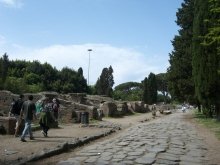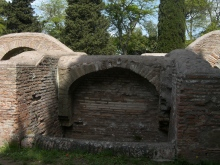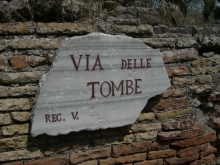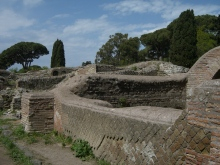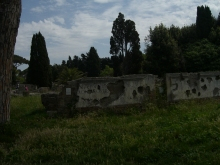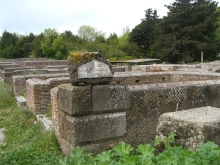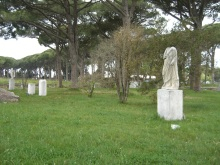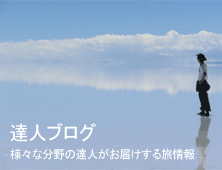Ostia Antica Excavations
Ostia Antica is a large archeological site, close to the modern suburb of Ostia (Rome) , that was the location of the harbour city of ancient Rome , which is approximately 30 km to the northeast. "Ostia" in Latin means "mouth". At the mouth of the River Tiber , Ostia was Rome's seaport, but, due to silting and a drop in sea level, the site now lies 3 km from the sea.
The site is noted for the excellent preservation of its ancient buildings, magnificent frescoes and impressive mosaics.
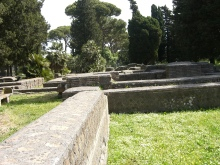
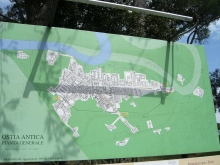
Ostia may have been Rome's first colonia .
The oldest archaeological remains so far discovered date back to only the 4th century BC. The most ancient buildings currently visible are from the 3rd century BC:the Castrum (military camp); of a slightly later date is the Capitolium .The opus quadratum of the walls of the original castrum at Ostia provide important evidence for the building techniques that were employed in Roman urbanisation during the period of the Middle Republic .
In 68 BC, the town was sacked by pirates .
During the sack, the port was set on fire, the consular war fleet was destroyed, and two prominent senators were kidnapped. This attack caused such panic in Rome that Pompey the Great arranged for the tribune Aulus Gabinius to rise in the Roman Forum and propose a law, the Lex Gabinia , to allow Pompey to raise an army and destroy the pirates. Within a year, the pirates had been defeated.
The town was then re-built, and provided with protective walls.
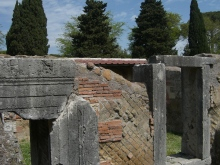
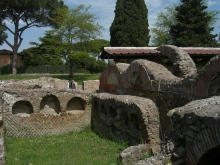
The town was further developed during the first century AD under the influence of Tiberius , who ordered the building of the town's first Forum .
Ostia itself was provided with all the services a town of the time could require; in particular, a famous lighthouse . Ostia contained the Ostia Synagogue , the earliest synagogue yet identified in Europe.
Archaeologists also discovered the public latrinas , organized for collective use as a series of seats that allow us to imagine today that the function was also a social moment. In addition, Ostia had a large theatre, many public baths, numerous taverns and inns, and a firefighting service.
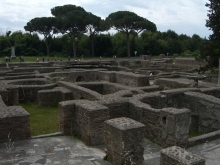
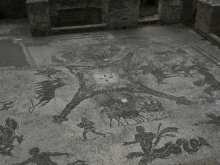
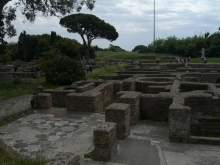
Ostia grew to 50,000 inhabitants in the 2nd century, reaching a peak of some 75,000 inhabitants in the 2nd and 3rd centuries AD.
Naval activities became focused on Portus instead. A slow decadence began in the late Roman era around the time of Constantine I , with the town ceasing to be an active port and instead becoming a popular country retreat for rich aristocrats from Rome itself.
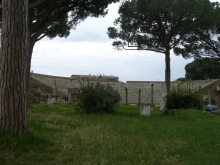
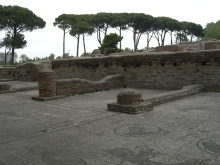
With the end of the Roman Empire , Ostia fell slowly into decay, and was finally abandoned in the 9th century due to the repeated invasions and sackings by Arab pirates, including the Battle of Ostia , a naval battle in 849 between Christian and Saracens; the remaining inhabitants moved to Gregoriopolis
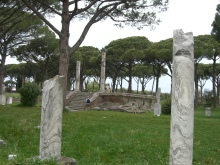
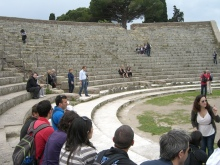
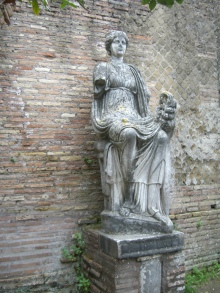
A "local sacking" was carried out by Baroque architects , who used the remains as a sort of marble storehouse for the palazzi they were building in Rome. Soon after, foreign explorers came in search of ancient statues and objects.
Massive excavations were undertaken from 1938 to 1942. The first volume of the official series Scavi di Ostia appeared in 1954
How to reach the archaeological site
The address of the excavations is:
Scavi di Ostia - Via dei Romagnoli, 717 - 00119 Ostia Antica - Roma
By metro you need to take the line B direction Laurentina till Magliana (will take around 7 minutes) and from Magliana take the metro to Lido di Ostia till at Ostia Antica (will take around 20 minutes).
-
投稿: ripplering -2012年5月14日 (月) 10時36分
■行きました~!
昨夏、1人旅で行きました。古代ローマ好きにはぜひ訪れて欲しい場所です。劇場や魚屋さんや壷がたくさんある所を歩いていると、2000年前の人々の喧騒が聞こえてきそうでした。ローマ市内から電車を乗り継いで1時間程度ですが、観光客だらけの市内と違ってとても静かでよかったです。また行きたい~!! -
投稿: his-rome -2012年5月15日 (火) 10時01分
■Re:行きました~!
>rippleringさんI'm very happy you appreciated this beautiful archeological place!It's very interesting and fascinating!Pls tell you friends and recommend them to visit Rome..Please come and visit Ostia Antica again and again!



 テーマ: 観光
テーマ: 観光





